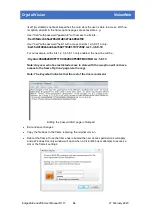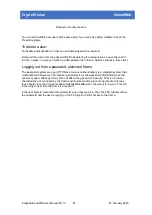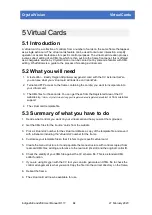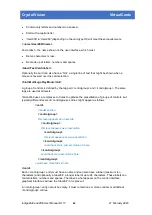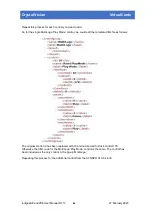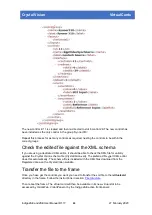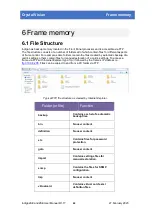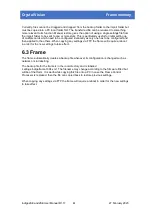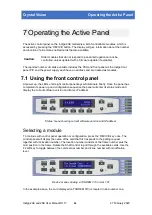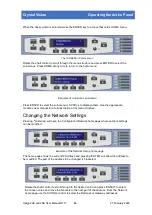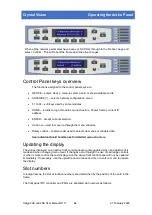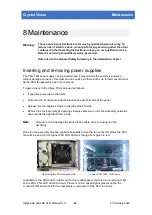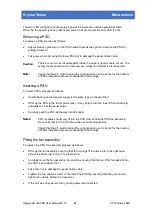
Crystal Vision
Virtual Cards
•
Contain only letters and numbers (no spaces).
•
Start with a capital letter.
•
'User900' to 'User999' (depending on the card type ID) will meet these requirements.
<name>User900</name>
And a label – the name shown on the user interface, which must:
•
Be ten characters or less.
•
Be made up of letters, numbers and spaces.
<label>TestCard</label>
Optionally the card can also have a 'hint', a single line of text that might be shown when a
mouse is hovered over the card selection.
<hint>MultiLogoPlayMode</hint>
A group of controls is defined by the tag pair <controlgroup> and </controlgroup>. The same
tags are used at all levels.
VisionWeb uses a complex set of rules to optimise the presentation of groups of controls, but
typically different levels of <controlgroup> entries might appear as follows:
<card>
header section
<controlgroup>
this level appears as a new tab
<controlgroup>
this level appears as an accordion
<controlgroup>
this level appears as a sub-accordion
</controlgroup>
could have more sub-accordions in here
</controlgroup>
could have more accordions here
</controlgroup>
could have more tabs in here
</card>
Each <controlgroup> entry must have a name and can also have a label (maximum ten
characters) and optionally a 'labelfull', a longer label of up to 24 characters. These labels can
contain letters, numbers and spaces. The label is what appears on the control interface;
graphical interfaces will use the 'labelfull' if it is present.
A
<
controlgroup
>
entry cannot be empty, it must contain one or more controls or additional
<controlgroup> entries.
Indigo 2AE and 2SE User Manual R1.17
42
27 February 2020









